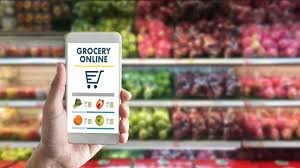Grocery is a sadomasochistic business. Sellers can count on stable revenues but have little margin for error on sourcing, price and waste. Shoppers suffer from a retail version of Stockholm syndrome. They are lured by grocers with the promise of savings, only to be fleeced. Shops make them do the work of picking the produce and bagging it. They set traps in the aisles—in the form of strategically placed celebrity magazines or freshly baked doughnuts—to slow shoppers down. Yet customers continue to return for more, despite having ever more options to order online and have groceries delivered to their doorstep. In China and America, online grocery shopping is a miserly 3.8% and 1.6% of the total, respectively.

Earlier this year Mr Steiner persuaded Marks & Spencer, a British retailer, to pay £750m for a half of Ocado’s domestic online-grocery business. The money is helping develop his firm’s newer, more lucrative international venture, which licenses the know-how to build modular high-tech warehouses that can be scaled up as needed. The biggest deal, struck in 2018, has been with Kroger. The American supermarket chain aims to order 20 Ocado customer fulfilment centres (CFCs, or, as Kroger calls them, sheds) by 2021, far more than the four that Ocado has so far erected in Britain (the newest burned down this year). Despite their recent slide Ocado’s shares still trade like a software firm’s, not a supermarket’s. JPMorgan Cazenove, a broker, said last month that the firm would need to announce 126 CFCs to justify a recent valuation of £9bn, three times the number it has planned.
译文由可可原创,仅供学习交流使用,未经许可请勿转载。












